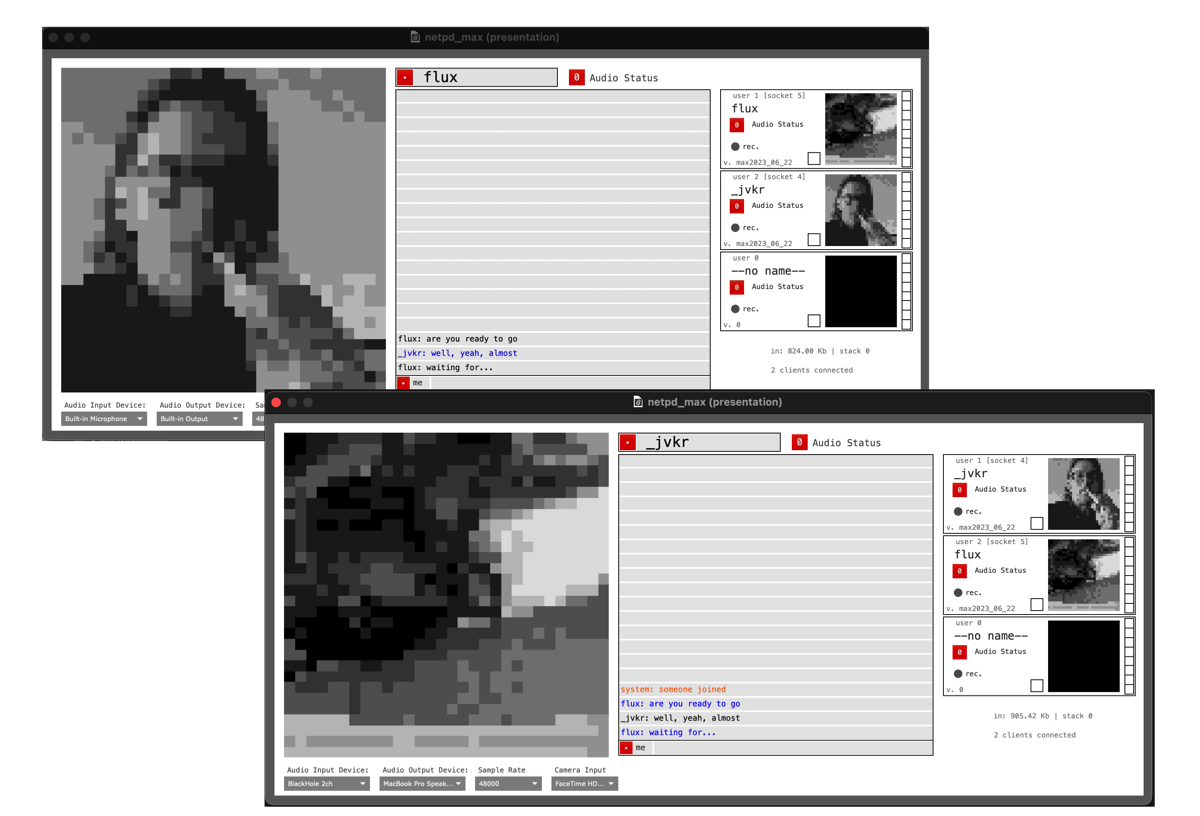
7 September 2022
…Two Rooms
The work ‘…Two Rooms’ is an improvisation of two musicians located in two spaces that are connected together through the internet. Both an audio and video connection between the two spaces is realized, allowing the musicians to follow each other’s activities as well as to interact with each other. Microphones and loudspeakers are set up in each space, in such a way that feedback builds up across the two spaces. The sound created by the feedback becomes an important material that organizes and directs the improvisation. In addition, sensors are used to measure the musicians’ movements which translate into controls for both guiding and disrupting the performance.
The audio connection between the two spaces is realized with the open source software SonoBus. Whereas this software is typically used to share an audio connection, in this case two channels are sent from one space to the other, and separately, two channels return. This is possible with the feature of SonoBus that allows setting up multichannel connections—four channels in this case.

Both computers connect to a NetPd server, a service for broadcasting data to remotely connected computers. NetPd is used to establish a video connection. Concerning the video, the image is transmitted at an extremely low resolution of 25x25 pixels, and created using a limited number of grayscales. Therefore, not only video can be sent using small data packages, also it was decided that the images should simply give an impression of what is going on at the other side, intensely blurring the details. Additionally, the interface connecting to NetPd allows the participants to set up a chat among them; typically useful in a preparatory stage.
The two musicians involved in this project were Leslee Smucker on violin and Peter van Bergen on saxophone. Peter owns a pair of MiMU gloves that were included in the setup. Leslee had recently been working on extending the violin using resonators, and it was decided to use them in this project, but additionally include vibration motors. These motors were attached to an ESP32 wireless microcontroller to which a nine-degrees-of-freedom sensor was connected as well. In this way both players had the option to freely—as in wireless—interact with the software running on their computers for the audio and video connections.
The research for ‘…Two Rooms’ was made possible with the kind support of Gemeente Den Haag, Stichting LOOS and the ARTEk foundation. A full report of this research is found on the Research-catalog.
